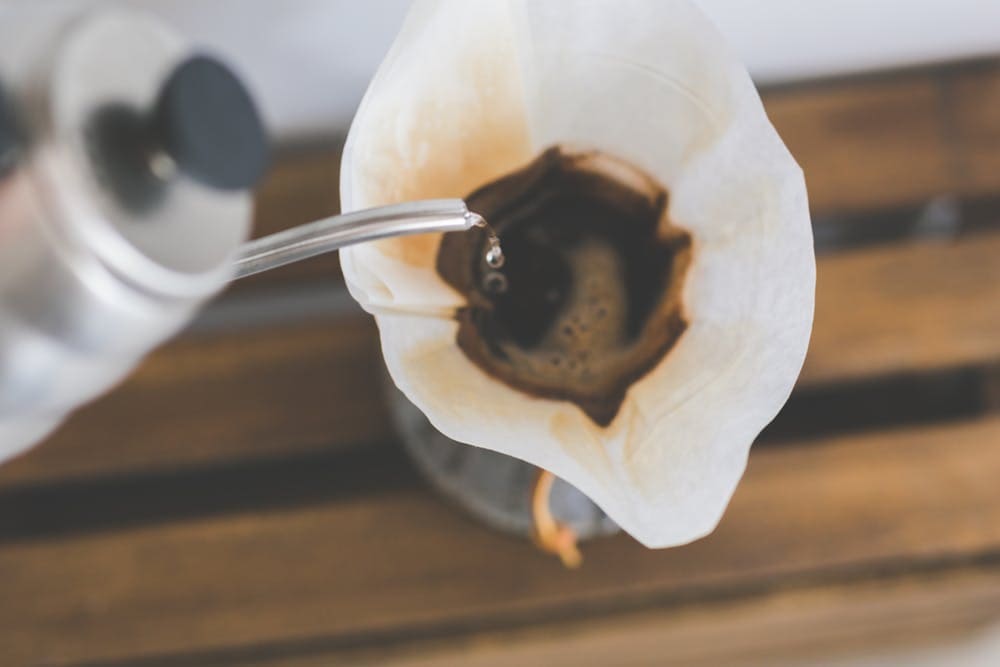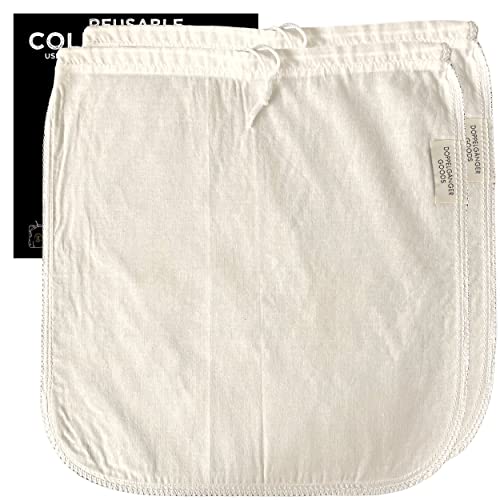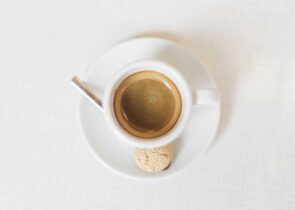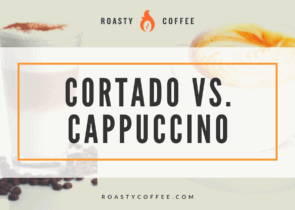Socks are great for wearing on your feet, but they’re also surprisingly great for…brewing coffee?
Yep, you read that correctly. Maybe you’ve heard about these simple gadgets already, or maybe this is the first time you’ve ever heard of them at all.

What Is It?
A coffee sock is not surprisingly as simple as its name implies: a tightly knitted piece of fabric attached to a metal wire. The brewing method for the coffee sock uses the processes of filtration (like a pour-over) and immersion (like a french press) depending on how long the sock itself is.
Perhaps the most well-known coffee sock manufacturer is the CoffeeSock Company, though there are other brands that create these nifty filters as well. Coffee socks are normally made out of 100% organic cotton. This is important because cotton is primarily composed of cellulose, which mixes well with water and is basically undetectable when it comes to possible flavor alteration. So, you shouldn’t have to worry about the filter itself leaving a strange flavor in your coffee.
Coffee socks as a whole are super affordable. Most of them range between 5 and 20 dollars, depending on the brand, size, and quality of the sock. Price may also depend on the shape of the coffee sock, as some come in longer, cylindrical, sock-like shapes, and others in the normal cone-shape.
Sock History
The coffee sock is prominent in a number of regional coffee cultures, including Costa Rica and Venezuela. Historically brewers have been using it due to its low cost and simplicity, but it’s experienced a resurgence in the last few years due to its efficiency and gentleness on the environment.
Today, the coffee sock is used primarily by homebrewers. Though it can be used in commercial coffee shops, many may prefer to use disposable filters for sanitation reasons. However, if you’re just using a coffee sock for your own brews at home, then you can easily just clean it for yourself.
Coffee Sock Brewing
Coffee socks are fairly simple and easy to operate, but they are also versatile. The primary example of this versatility is that they allow you to brew both hot and cold brew coffee. Here’s a quick rundown on what both of these processes look like with the coffee sock.
Hot Brewing
Depending on how large of a serving you’d like, portion out your coffee for brewing. Over here at Roasty, we find that one ideal form of coffee/water ratio is one teaspoon for every one cup (which is 6 ounces) of coffee.
After you’ve measured out your amount, place the coffee sock over your designated cup/container you wish to drain the coffee into. Next, place your measured out coffee grounds into the sock. Then, boil the correct amount of water that you will then pour over the grounds, soaking them thoroughly. Depending on how long your sock is, you might have to pour your water in intervals to make sure the grounds are completely extracted. After you’ve completed the brewing process, sip and enjoy!
Cold Brewing
Everyone deserves a refreshing cup of cold brew. After portioning your coffee, place the filter over your designated cup or container. If you’re grinding your coffee yourself, make sure your grounds are coarse in size. Place the grounds in the sock, and secure your filter so that no grounds escape into the brew (you can do this by either resting to sock on top of the container or tying it and completely submerging it in the water).
After you’ve done this, let your coffee soak into the water for an extended amount of time. This can take anywhere from 8-24 hours, depending on how much coffee you want to make, and how flavorful you want it to be.
Coffee Sock Brands
With such an abundance of choices out there, the differences between sock brands may be a little overwhelming for some. So, we’ve gathered a handful of some of the most reliable coffee sock options on the market right now.
Sentir Cubano Cloth Coffee Strainer
Coming in packs of three, these cloth strainers by Sentir Cubano are a pretty spot-on example of what coffee socks are like. With three to rotate between, they should last you for a long time if cleaned and treated properly. Furthermore, the thick wooden handles make them easy to hold and control during the brewing or cleaning process.
When it comes to size, they’re longer, allowing you to make larger cups of coffee. However, if you’re mainly looking to use them to brew single servings of coffee, they’ll also work fine.
Hide & Drink Cotton Coffee Socks
These standard cone-shaped coffee filters by Hide & Drink are handmade out of 100% natural, unbleached, organic, manta cotton. These socks are perfect for those who are used to cone-shaped filters, which are often used for brewing processes like drip coffee or the Chemex.
Not only are they made with quality in mind, but they navigate quantity well. These socks are the perfect size to brew both a single cup of coffee or several.
Doppeltree Organic Cotton Cold Brew Coffee Bag
For those looking for a larger coffee sock to brew in, the Doppeltree Organic Coffee Bag has you covered. With two in a pack, these powerful socks will fit into a variety of bottles/buckets that you could brew with, from a mason jar to even a small bucket. As far as quality is concerned, every bag is made out of 100% natural organic cotton.
Coming with an easy to open and close drawstring, the Doppeltree secures your coffee grounds while brewing, and also prevents any grounds slipping through into the brew. These bags are ideal for cold brewing because they allow you to brew a large amount of coffee that’s rich, robust, refreshing, and ready to sip.
Sock Care
When using your sock to repeatedly brew cups of coffee, it’s important to know how to keep it clean.
Before your first use, make sure to thoroughly clean/disinfect the sock. You can do this by placing the sock in water and boiling it for a few minutes. To be 100% sure you get any leftover toxins/germs off from the packaging, we suggest boiling your sock for about 10 minutes.
After you’ve cleaned your sock and you’ve successfully made your first cup(s) of coffee with it, it’s important to also clean the sock after brewing. Cleaning after brewing is important to remove any extra oils that may be leftover on the sock so as to not alter the oils/flavor in your next brew.
When you’ve finished brewing, remove the grounds from the sock. Rinse the sock out and squeeze out the excess water. We suggest that you don’t use actual soap to clean your sock, so you don’t have soap residue remaining on it. However, if you must use soap of some kind, we suggest using one that’s mild. After cleaning, hang it up to dry for your next use!
We also recommend that after 5-6 weeks of using the sock to thoroughly clean it by boiling it again for several minutes to remove any built-up oils.
Wrapping Up
There you have it! A coffee sock is a perfect item to add to any barista wish-list, and they’re a filter option that’s gentle to your wallet as well as the environment. If you’re a dedicated home barista, or maybe you’re looking for a more efficient filter option for your coffee shop, the coffee sock will get the job done every time.
Happy caffeinating!










